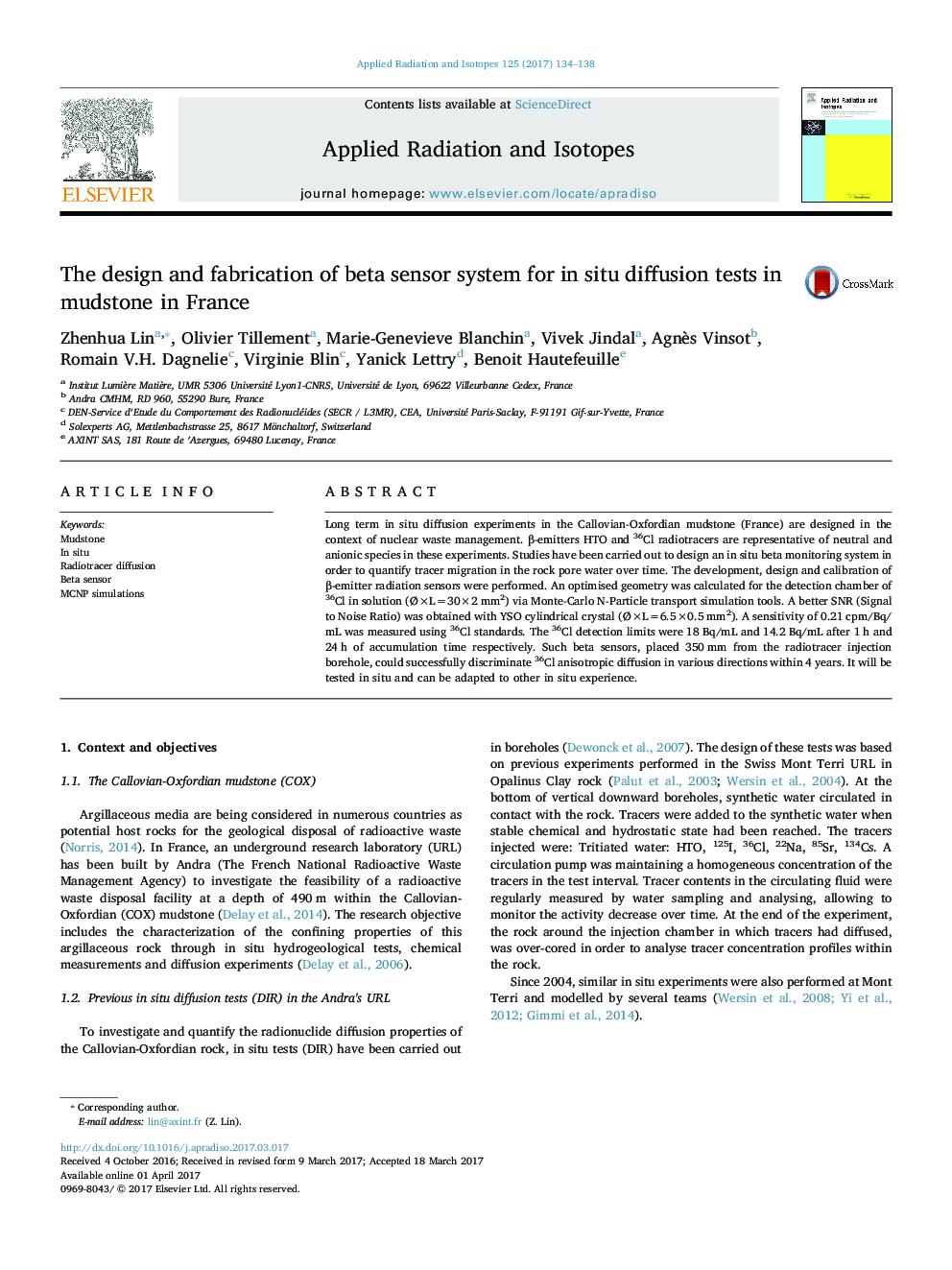| Article ID | Journal | Published Year | Pages | File Type |
|---|---|---|---|---|
| 5497931 | Applied Radiation and Isotopes | 2017 | 5 Pages |
Abstract
Long term in situ diffusion experiments in the Callovian-Oxfordian mudstone (France) are designed in the context of nuclear waste management. β-emitters HTO and 36Cl radiotracers are representative of neutral and anionic species in these experiments. Studies have been carried out to design an in situ beta monitoring system in order to quantify tracer migration in the rock pore water over time. The development, design and calibration of β-emitter radiation sensors were performed. An optimised geometry was calculated for the detection chamber of 36Cl in solution (ÃÃL=30Ã2 mm2) via Monte-Carlo N-Particle transport simulation tools. A better SNR (Signal to Noise Ratio) was obtained with YSO cylindrical crystal (ÃÃL=6.5Ã0.5 mm2). A sensitivity of 0.21 cpm/Bq/mL was measured using 36Cl standards. The 36Cl detection limits were 18 Bq/mL and 14.2 Bq/mL after 1 h and 24 h of accumulation time respectively. Such beta sensors, placed 350 mm from the radiotracer injection borehole, could successfully discriminate 36Cl anisotropic diffusion in various directions within 4 years. It will be tested in situ and can be adapted to other in situ experience.
Keywords
Related Topics
Physical Sciences and Engineering
Physics and Astronomy
Radiation
Authors
Zhenhua Lin, Olivier Tillement, Marie-Genevieve Blanchin, Vivek Jindal, Agnès Vinsot, Romain V.H. Dagnelie, Virginie Blin, Yanick Lettry, Benoit Hautefeuille,
